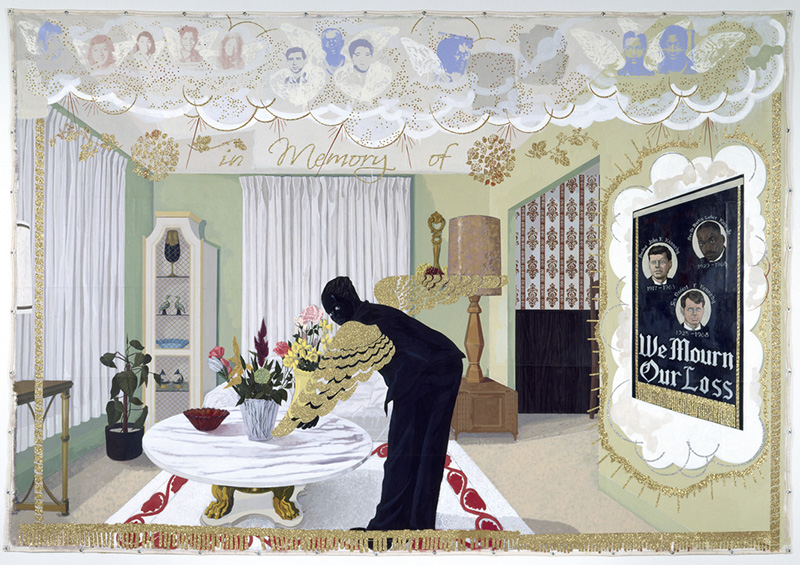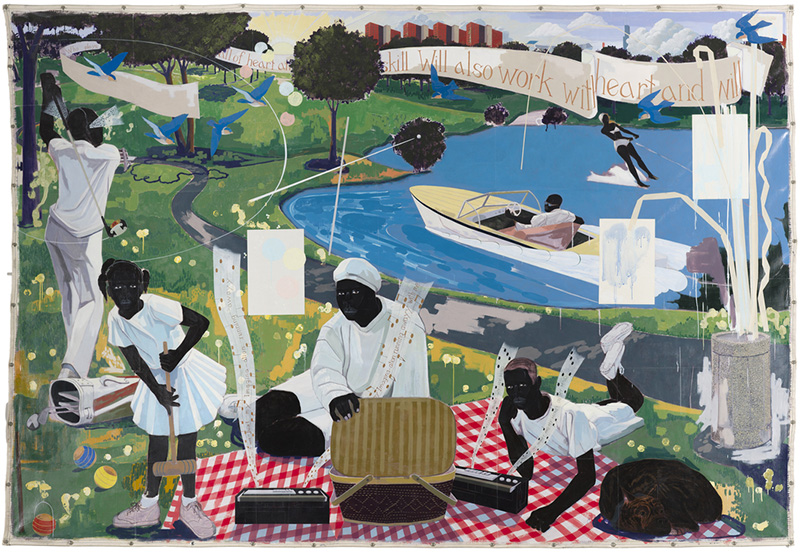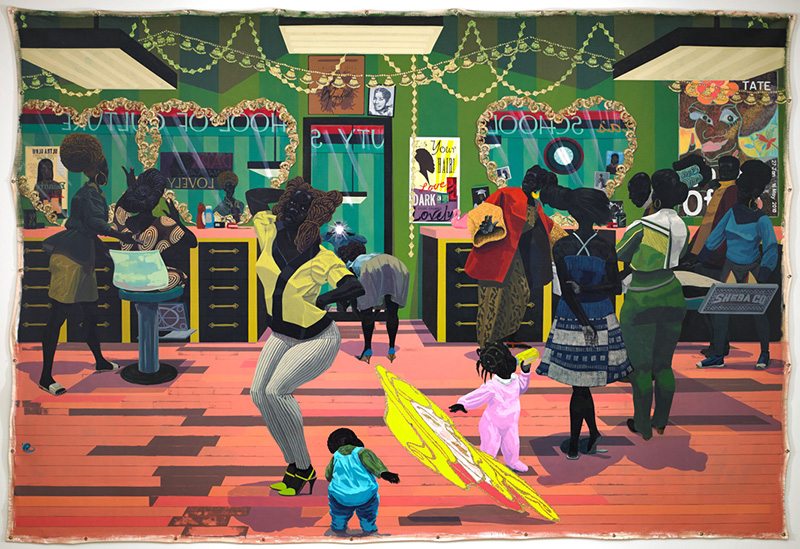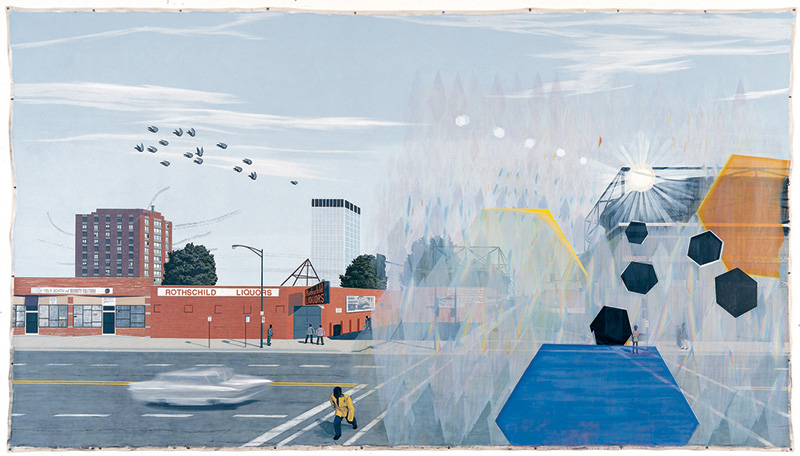ART-PREVIEW:Kerry James Marshall-Mastry
 Born in Alabama, Kerry James Marshall uses painting, sculptural installations, collage, video, and photography to comment on the history of black identity both in the United States and in Western art. He is well known for paintings that focus on black subjects historically excluded from the artistic canon, and has explored issues of race and history through imagery ranging from abstraction to comics.
Born in Alabama, Kerry James Marshall uses painting, sculptural installations, collage, video, and photography to comment on the history of black identity both in the United States and in Western art. He is well known for paintings that focus on black subjects historically excluded from the artistic canon, and has explored issues of race and history through imagery ranging from abstraction to comics.
By Efi Michalarou
Photo: MCA Chicago Archive
Encompassing 80 works including 72 paintings, that span his 35-year career the exhibition “Mastry” reveals Kerry James Marshall’s practice to be a complex and compelling one that synthesizes a wide range of pictorial traditions to counter stereotypical representations of black people in society and reassert the place of the black figure within the canon of Western painting. Born before the passage of the Civil Rights Act in Birmingham, Alabama, and witness to the Watts rebellion in 1965, Marshall has long been an inspired and imaginative chronicler of the African American experience. He is known for his large-scale narrative history paintings featuring black figures, defiant assertions of blackness in a medium in which African Americans have long been invisible, and his exploration of art history covers a broad temporal swath stretching from the Renaissance to 20th Century American Abstraction. The artist critically examines and reworks the Western canon through its most archetypal forms: the historical tableau, landscape and genre painting, and portraiture. His work also touches upon vernacular forms such as the muralist tradition and the comic book in order to address and correct, in his words, the “vacuum in the image bank” and to make the invisible visible. The exhibition’s title is a play on words referencing Marshall’s comics-inspired “Rythm Mastr” series, and the included works range from the early and iconic such as: “A Portrait of the Artist as a Shadow of His Former Self” (1980) and “Invisible Man” (1986), to his newest revisions of traditional history painting like: “Untitled (Studio)” (2014), a monumental picture depicting an artist’s workspace. The exhibition also reunite the five paintings of Marshall’s “Garden Project” series, pictures from the mid-‘90s that serve to complicate the idea of public housing as bleak or desolate for the first time in 20 years. Included among these is these is “Watts 1963”, which depicts the artist and his siblings at play outside Nickerson Gardens, the projects in Watts where the 8-year-old Marshall and his family lived when they first moved to California in 1963. Pages from the “Rythm Mastr” project, (1999- ) are also featured in the exhibition.
Info: Curators: Ian Alteveer, Helen Molesworth and Dieter Roelstraete, Metropolitan Museum of Art, The Met Breuer, 945 Madison Avenue, New York, Duration 25/10/16-29/1/17, Days & Hours: Tue-Thu & Sun 10:00-17:30, Fri-Sat 10:00-21:00, www.metmuseum.org



